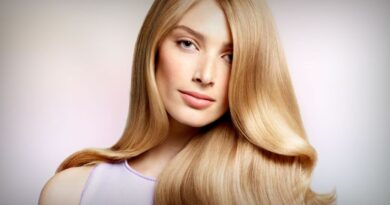Haircare Tips for Taming Frizzy Hair – Frizzy hair can be a daily struggle, leaving many of us searching for effective ways to manage and tame those unruly locks. Whether it’s the result of environmental factors like humidity or due to inherent hair texture and damage, the battle against frizz is a common one. In this guide, we will delve into practical haircare tips and techniques to help you regain control over your frizzy hair and achieve a smoother, more manageable mane.
Understanding the root causes of frizz is essential, as it enables you to tailor your haircare routine to address specific issues. We will explore everything from proper shampooing and conditioning techniques to protective hairstyles that can minimize frizz-inducing factors. Additionally, we’ll delve into the importance of hydration and nutrition for overall hair health, as well as strategies for managing frizz in high-humidity conditions.
Whether you’re seeking DIY solutions or considering professional treatments, our comprehensive advice will empower you to take charge of your frizzy hair, unlocking the potential for a sleek, more confident you. Say goodbye to frizz and hello to gorgeous, manageable hair.
Importance of proper haircare for taming frizz
Proper haircare is of utmost importance for taming frizz for several reasons:
- Enhances Hair Health: A well-structured haircare routine promotes overall hair health, which is essential for minimizing frizz. Healthy hair is better equipped to resist environmental factors and damage that often lead to frizz.
- Moisture Balance: Frizz is often a result of moisture imbalance in the hair. Proper haircare helps in maintaining the right moisture level by using the right shampoos, conditioners, and treatments, thereby reducing frizz.
- Damage Prevention: Regular haircare can prevent damage to the hair’s cuticle, which, when damaged, allows moisture to enter the hair shaft, causing it to swell and become frizzy. Using heat protectants and minimizing the use of heat styling tools can protect against damage.
- Sealing the Cuticle: Many haircare products, such as serums and oils, are designed to smooth and seal the hair cuticle, preventing moisture from penetrating and causing frizz.
- Styling and Management: A structured haircare routine provides you with the tools and products needed to style and manage your hair effectively. Proper styling techniques and products can help control frizz and create a sleeker appearance.
- Humidity Control: Certain haircare products and techniques are specifically designed to combat the effects of humidity, a major contributor to frizz. These products can provide a barrier against moisture, helping to keep frizz at bay.
- Long-Term Benefits: Consistency in haircare practices can lead to long-term improvements in frizz control. When you adopt a routine tailored to your hair type and needs, you’ll notice a sustained reduction in frizz over time.
Also, Read – Onion Juice: A Secret To Luscious Hair
Haircare Tips for Taming Frizzy Hair

Use a Sulfate-Free Shampoo
Using a sulfate-free shampoo is vital for managing frizzy hair. Sulfates in traditional shampoos can strip your hair of its natural oils, leading to increased frizz. Opting for sulfate-free options helps retain essential moisture and leaves your hair smoother and less prone to frizz. Make this simple switch to improve the overall health and appearance of your hair.
Condition Regularly
Regular conditioning is crucial for taming frizzy hair. Apply a quality conditioner each time you wash your hair to keep it well-hydrated and reduce frizz. Conditioning helps to smooth the hair cuticle, preventing moisture loss and improving overall manageability.
Consider incorporating a deep conditioning treatment once a week for added nourishment. By conditioning regularly, you can enhance the texture and appearance of your hair, making it more resilient to frizz and environmental factors that contribute to its unruliness.
Cold Water Rinse
A cold water rinse is a simple yet effective technique to combat frizzy hair. After applying conditioner, finish your shower routine by rinsing your hair with cold water. This step helps seal the hair cuticles, preventing moisture loss and reducing frizz.
Cold water also adds shine and smoothness to your locks, making them more resistant to humidity and external factors that can cause frizz. So, don’t skip this final step—it’s a quick and easy way to achieve a sleeker, more controlled look and maintain the health of your hair.
Avoid Overwashing
Overwashing your hair can exacerbate frizz. Instead of daily washing, try to limit it to every 2-3 days. Excessive washing strips your hair of natural oils, leaving it dry and prone to frizz. By spacing out your washes, you allow your scalp to regulate oil production and keep your hair better moisturized.
Use dry shampoo between washes to absorb excess oil and keep your hair looking fresh. This change in routine can help manage frizz and maintain a healthier, more balanced environment for your hair.
Use a Microfiber Towel or a T-shirt
Ditch traditional towels in favor of a microfiber towel or a soft T-shirt to combat frizz. Standard towels can cause friction, leading to hair breakage and increased frizz.
After washing your hair, gently pat it dry with a microfiber towel or a cotton T-shirt. This minimizes friction, reducing the risk of damage to your hair’s cuticles. The result is smoother, less frizzy hair that retains its natural texture. Make this small adjustment to your haircare routine to help maintain a frizz-free and healthy appearance.
Also, Read – Unlock the Secret to Silky Hair
Apply a Leave-In Conditioner
Incorporating a leave-in conditioner into your haircare routine is a smart move for taming frizzy hair. After washing and conditioning your hair, apply a small amount of leave-in conditioner, focusing on the mid-lengths and ends. This additional layer of hydration helps lock in moisture, reduce frizz, and provide your hair with extra protection throughout the day.
Leave-in conditioners also aid in detangling and add softness, making your hair more manageable. Choose a product suitable for your hair type, and remember that a little goes a long way, so avoid over-application. With this simple step, you’ll enjoy smoother, more controlled hair that looks and feels healthier.
Use a Wide-Tooth Comb
When your hair is wet, use a wide-tooth comb to gently detangle it. Wet hair is more fragile and prone to breakage, and using a wide-tooth comb minimizes the risk of causing damage. Start from the tips of your hair and work your way up to the roots, patiently removing any knots or tangles.
This method prevents unnecessary stress on your hair, reduces frizz, and promotes smooth, healthy-looking locks. Remember to be gentle and avoid yanking or pulling, as rough handling can lead to more frizz and damage. By incorporating a wide-tooth comb into your routine, you’ll help maintain your hair’s integrity and reduce the likelihood of frizz.
Heat Protection
Protecting your hair from heat is essential in the battle against frizz. Before using hot styling tools like flat irons, curling irons, or blow dryers, apply a heat protectant product. Heat protectants create a barrier between your hair and the high temperatures, minimizing damage and frizz.
They also help lock in moisture, ensuring your hair remains hydrated and less prone to becoming unruly. Make this step a regular part of your styling routine to shield your hair from heat-induced frizz and maintain its health and shine. Whether you straighten, curl, or blow dry your hair, heat protection is your first line of defense against frizz and damage.
Avoid Excessive Heat
Minimize the use of excessive heat on your hair to prevent frizz. Frequent styling with hot tools can lead to damage and dryness, making your hair more susceptible to frizz. Embrace your natural texture or opt for heatless styling methods whenever possible. If you do use heat styling tools, try to use them on lower heat settings and limit their use to special occasions.
Reducing heat exposure not only protects your hair from damage but also helps maintain its natural moisture balance. By avoiding excessive heat, you’ll promote healthier, smoother hair with less frizz, and have more control over its appearance in the long run.
Anti-Frizz Serums and Oils
Anti-frizz serums and lightweight hair oils are excellent products for managing unruly hair. Apply a small amount to your hair, focusing on the ends and any areas prone to frizz, to smooth and add shine. These products help seal the hair cuticle, reducing the penetration of moisture that causes frizz. Be cautious not to overdo it, as using too much can make your hair look greasy.
Look for serums and oils that are specifically formulated to combat frizz and are suitable for your hair type. Incorporating these products into your routine is an effective way to maintain a sleek, frizz-free look, and add a touch of hydration and luster to your locks.
Conclusion
In conclusion, by implementing a consistent and personalized haircare routine, you can effectively tame frizzy hair and enjoy the benefits of smoother, more manageable locks. Understanding the root causes of frizz, using the right products, practicing good habits, and protecting your hair from environmental factors are all key elements in this endeavor. With dedication and proper care, you can bid farewell to frizz and welcome the confidence that comes with having healthy, beautiful hair.
FAQs
You can identify your hair type and frizz problems by observing your hair’s texture, thickness, and behavior in different weather conditions. Consulting a hairstylist can also provide valuable insights.
Look for sulfate-free and moisturizing shampoos. Conditioners should be chosen based on your hair type and texture. Consider deep conditioners and hair masks for added moisture.
Use heat protectant products when using heat styling tools, and apply leave-in conditioners or anti-frizz serums to damp hair. Use gentle brushing techniques with wide-toothed combs or detangling brushes.







